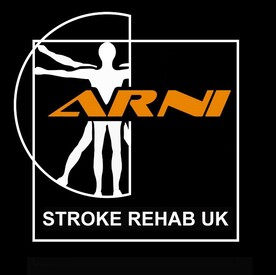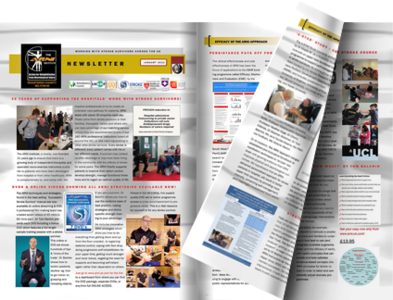I was 81 when I had a stroke, following an episode of atrial fibrillation. I had been fit and active until then although somewhat hindered by having weak ankles and knees from having been hit by a speeding car twenty years before. Paralysed on the left side, I was taken to one of the specialist acute stroke units in greater London, where I was given a clot-busting injection, which led to some slight movement of my affected arm after a few hours. To cap it all, I developed pneumonia the next day.
After excellent care there, I was moved to the stroke unit in the hospital in our borough so that I would be eligible for local social services etc on release. The doctor who met me said that their medical staff’s main role was to assist the work of the therapists in the unit. Once the pneumonia began to be under control the physiotherapist got me onto my wobbly legs – at first walking a little with a frame and after a while a stick – and pressed me to begin to move and use my left arm a little through the pain. I was also made to begin to wash and shower myself as best I could. Although I had not lost my speech, it had been affected by the stroke and, more importantly, swallowing had been impaired (perhaps the cause of the pneumonia?). This gradually improved through following the rigorous exercises of the speech therapist and meant I could after a while eat normal food instead of only puréed or, later, mashed.
Before my discharge, four weeks after the stroke, an occupational therapist came with me to my home to advise on and arrange for the provision of special chairs, and support rails in the shower and along the steep staircase. The hospital also arranged for regular visits from a community matron, who liaised with my GP over my general health and improvement as well as a physiotherapist who gave exercises and encouraged me to gradually walk further and, after a while, to stop using a stick indoors; I still used one outside as the footpaths are so uneven. It was she who put my name forward to join a group that were to have twelve weekly sessions with Tom Balchin and his colleagues as part of a research project set up by Brunel University. I went along to the first not knowing exactly what to expect, but keen to try anything that might help me improve my limited recovery.
Two things impressed me at once. First, the diversity of those in the group: in age range, range of disability (e.g. one person could hardly walk and another had difficulty speaking) and as to when they had suffered their stroke – varying from a few months to several years ago. Second, Tom’s enthusiasm and directness in pushing us further than we thought we could go in gaining strength and increased mobility through the exercises he had evolved during his own recuperation from a major stroke. This positive approach and seeing what the other people were achieving were great incentives to continue his exercises at home between classes. I would come home from the first classes exhausted, but healthily so. But I had to find the balance between “pushing through the pain” and not doing too much.
By then 82, I could not pretend to work in the way of a twenty or thirty year old and my earlier accident caused by a car restricted me to some extent in what I could do, as did the onset of a hernia at the time of the later sessions. Nevertheless, my family and friends all commented on how my mobility, confidence and general strength all improved class by class. There have been minor milestones since: the first time on a train, on an escalator, driving the car. I owe so much of this improvement to Tom and his ARNI approach and, not least, the manual he wrote (‘The Successful Stroke Survivor’), the clear drawings and descriptions of which remind me of the exercises and procedures he offered. I hope to be able to follow up with more such work.
Thank you ARNI.


